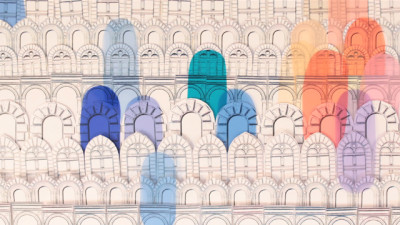The Palimpsest
In 1998, researchers discovered that mathematical proofs by Archimedes had been overwritten with biblical texts by monks in the 13th century. Documents such as this, with previous erasures still visible beneath the primary text, are known as palimpsests. Architecture can also be a palimpsest: as cities and buildings are modified and re-purposed, traces of their previous lives remain visible.
Here the Interactive Architecture Lab, a research lab of the Bartlett School of Architecture, imagines what an urban palimpsest can be in the digital age. Using 3D scanning and virtual reality, their project records personal stories and local histories, layering them over the city at a 1:1 scale. Building this collective memory is especially important in areas undergoing dramatic urban redevelopment. The lab’s first initiative, The Camden Palimpsest, uses the UK High Speed Rail 2 project as a case study. It highlights stories of Camden residents – some of whom will lose their homes and workplaces – and explores how their lives will be transformed. The virtual Palimpsests aim to create more inclusive planning practices, using emerging technology to directly connect communities, governments, and developers in conversation. They also become historical documents, digitally recording spaces and stories that might otherwise be lost.
- English
- Takashi Torisu, Russell Beaumont, Haavard Tveito, Interactive Architecture Lab
- Interactive Architecture Lab








